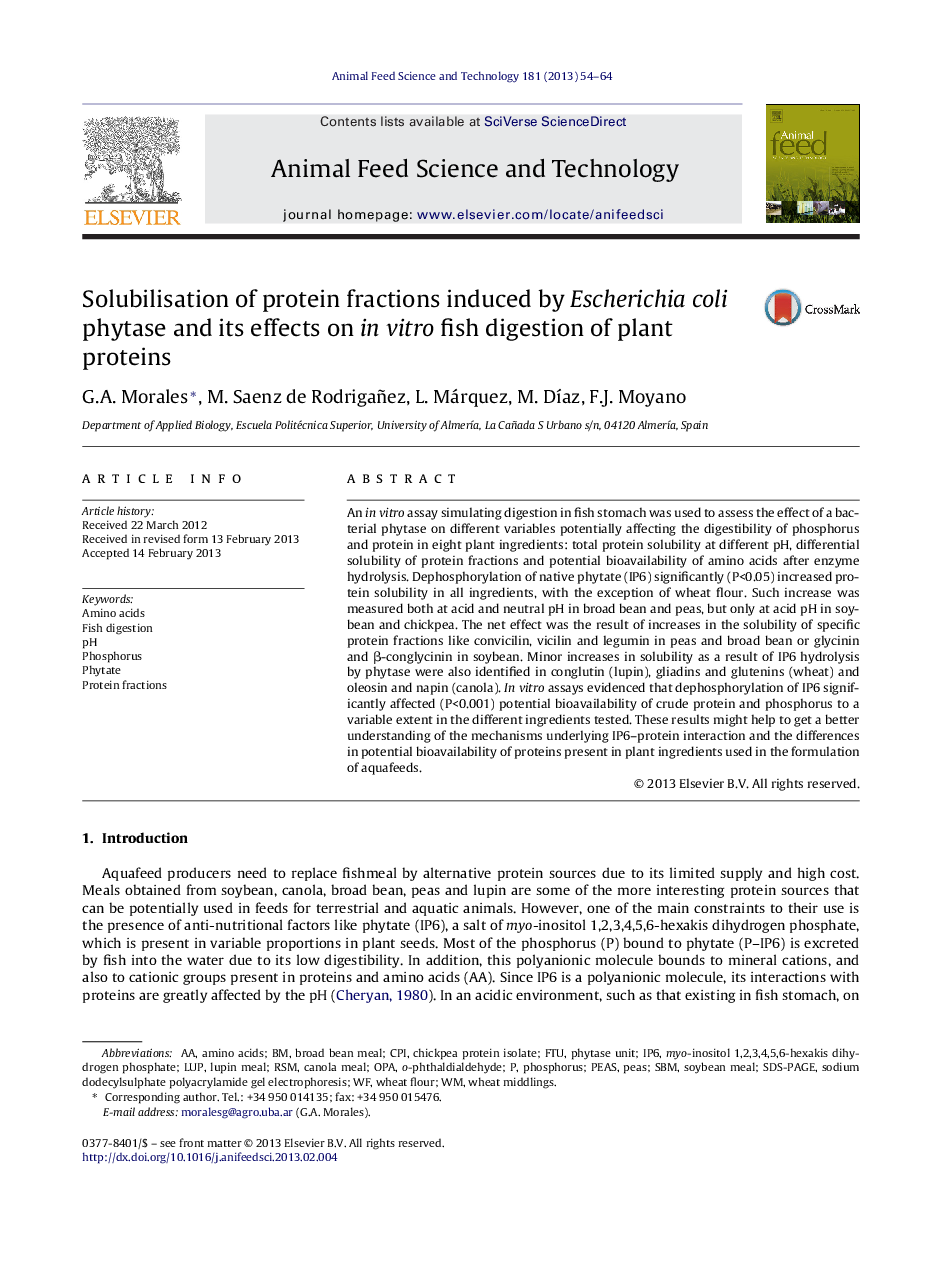| Article ID | Journal | Published Year | Pages | File Type |
|---|---|---|---|---|
| 8491941 | Animal Feed Science and Technology | 2013 | 11 Pages |
Abstract
An in vitro assay simulating digestion in fish stomach was used to assess the effect of a bacterial phytase on different variables potentially affecting the digestibility of phosphorus and protein in eight plant ingredients: total protein solubility at different pH, differential solubility of protein fractions and potential bioavailability of amino acids after enzyme hydrolysis. Dephosphorylation of native phytate (IP6) significantly (P<0.05) increased protein solubility in all ingredients, with the exception of wheat flour. Such increase was measured both at acid and neutral pH in broad bean and peas, but only at acid pH in soybean and chickpea. The net effect was the result of increases in the solubility of specific protein fractions like convicilin, vicilin and legumin in peas and broad bean or glycinin and β-conglycinin in soybean. Minor increases in solubility as a result of IP6 hydrolysis by phytase were also identified in conglutin (lupin), gliadins and glutenins (wheat) and oleosin and napin (canola). In vitro assays evidenced that dephosphorylation of IP6 significantly affected (P<0.001) potential bioavailability of crude protein and phosphorus to a variable extent in the different ingredients tested. These results might help to get a better understanding of the mechanisms underlying IP6-protein interaction and the differences in potential bioavailability of proteins present in plant ingredients used in the formulation of aquafeeds.
Keywords
Related Topics
Life Sciences
Agricultural and Biological Sciences
Animal Science and Zoology
Authors
G.A. Morales, M. Saenz de Rodrigañez, L. Márquez, M. DÃaz, F.J. Moyano,
